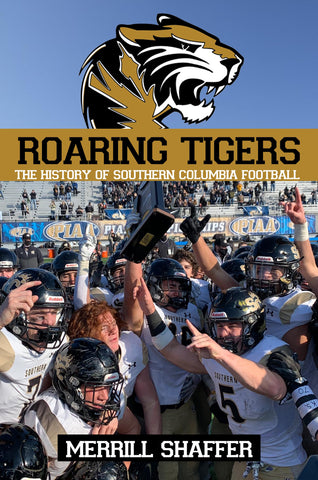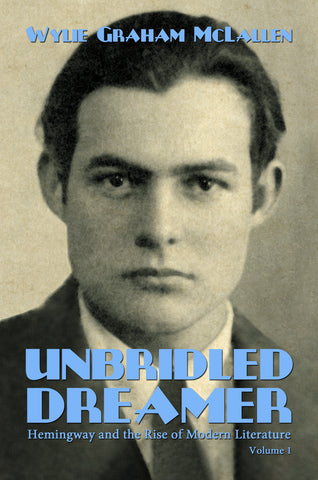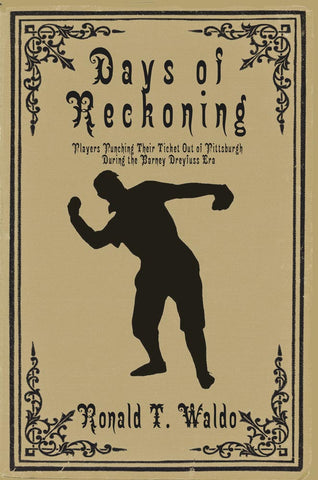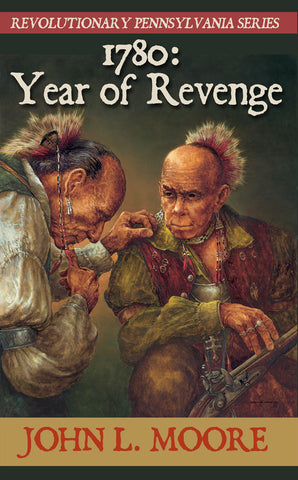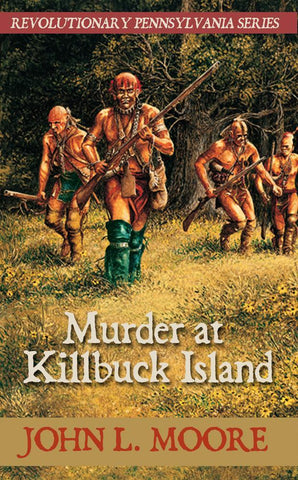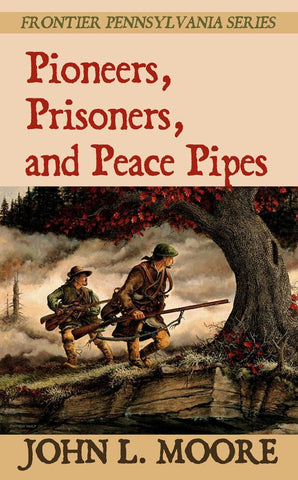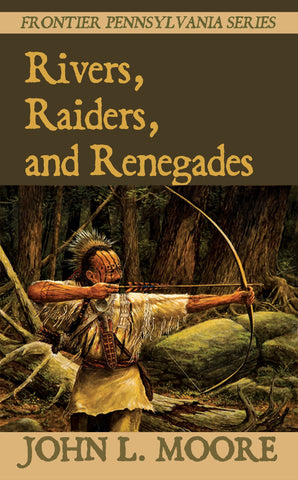Frontier Pennsylvania Series
As the officer in charge at Hyndshaw’s Fort in the Pocono Mountains, Captain John Van Etten knew that few Indian war parties raided the settlements during the snowy winter months, but that warm spring weather often signaled the sudden onslaught of Indian attacks.
The captain himself was wary, and he made it a point to keep his troops on their guard. He had good reason for this. The morning of May 7, 1757, for instance, he learned that while on sentry duty during the night, some of his men had observed “that the dogs kept an unusual barking and running to a particular place … ” With daylight, the soldiers ventured out to investigate “and found that an Indian had stood behind a tree about 25 yards from the fort. Being told, I went to see and found it true, his tracks being visible enough to be seen.”
John L. Moore’s non-fiction book contains true stories of Van Etten and other real people caught up in the struggles that took place all along the Pennsylvania frontier throughout the 1700s. Other chapters tell how:
- Blacksmith Anton Schmidt repaired guns for Indian hunters who came to the Moravian mission at Shamokin. He knew Chief Shikellamy, the Iroquois territorial governor who lived in the town at present-day Sunbury. When Shikellamy died in 1748, carpenters at the mission made a wooden coffin for him, and Schmidt was one of four men who carried the old chief to his grave. Seven years later, as Indian attacks shattered the long peace that William Penn had established in 1681, the blacksmith guided a small military force headed by Benjamin Franklin from Philadelphia over muddy country roads to Bethlehem, where the Moravian Church was based. Franklin’s column included a wagon carrying firearms for settlers to use against enemy Indians. It also transported equipment for building stockade forts in the mountains.
- Major James Burd, the commandant at Fort Augusta, welcomed a delegation of Iroquois leaders. In March 1757, they came down the Susquehanna River’s North Branch in a fleet of fifteen canoes and three flat-bottom boats. The visitors ““informed me that there was 800 French and Indians marched from Fort Duquesne against this fort, and they were actually arrived at the head of the West Branch of this river, and were there making canoes and would come down as soon as they were made.” To Burd’s relief, no such invasion ever occurred.
- Captain Patrick Work, a Pennsylvania officer who in October 1757 was marching his troops along a forest trail that crossed Peters Mountain north of present-day Harrisburg. As they reached the top of the ridge, “the advance guard, consisting of a sergeant and 12 men, discovered a party of Indians … Our party advanced supposing them to be friends until they came within about a hundred yards, when the Indians fired upon them, which was returned briskly by our men.”
The author uses journals, letters, official reports and other first-person accounts to portray the frontiersmen and the events and conflicts in which they were involved. The stories are set mainly in the valleys of the Delaware, Juniata, Lehigh, Ohio and Susquehanna rivers.
by John L Moore
Page Count: 106
Trim Size: 5 x 8
Publish Date: December 3, 2014
Imprint: Sunbury Press
Genre: History
HISTORY / United States / State & Local / Middle Atlantic
HISTORY / United States / Colonial Period (1600-1775)
You might also like ...
-
Surviving Hitler, Evading Stalin$19.95One Woman’s Remarkable Escape from Nazi Germany...One Woman’s Remarkable Escape from Nazi Germany The peaceful farm life of a teenage girl in Germany is abruptly upended when WWII comes knocking at her family’s door. One month before her sixteent...
-
Failure Factory$22.95- How Baltimore City Public Schools Deprive Tax...- How Baltimore City Public Schools Deprive Taxpayers and Students of a Future - “Educational institutions have evolved into a new bureaucracy. Chris Papst demonstrates the courage to challenge pow...
-
Black Clover$22.95Murder in a Small Pennsylvania Town and a Fami...Murder in a Small Pennsylvania Town and a Family's Fight for Justice — Carl Wade Ryder—brother, son, and all-around good person—was murdered on August 5, 2006. Blood was found at his home in Fra...
-
Feather White$24.95A 1970s Memoir: Commercial Fishing Out of Provi...A 1970s Memoir: Commercial Fishing Out of Provincetown and the Backwoods Counterculture Movement in Nova Scotia From the decks of off-shore scallop boats in the North Atlantic to the backwoods of t...
-
Family Declassified$22.95Uncovering My Grandfather's Journey from Spy to...Uncovering My Grandfather's Journey from Spy to Children's Book Author — Why do people keep deep secrets about their lives and ancestry? In Family Declassified, Katherine Fennelly applies her exp...
-
Roaring Tigers$19.95The History Of Southern Columbia Football High ...The History Of Southern Columbia Football High school football has been played in Pennsylvania since the late-1800s. The rich tradition of Pennsylvania scholastic football has produced legendary p...
-
Unbridled Dreamer$19.95Hemingway and the Rise of Modern Literature, Vo...Hemingway and the Rise of Modern Literature, Volume 1 The Modern Movement in art was an authentic response to a much-changing world. The rapid industrialization and urbanization of western society ...
-
Call Sign Dracula: My Tour with the Black Scarves: April 1969 to March 1970$22.95Call Sign Dracula provides an outstanding, valu...Call Sign Dracula provides an outstanding, valuable and worthy in-depth look into the life of a US Army Infantry soldier serving with the famed 1st Infantry Division (The Big Red One) in Vietnam. ...
-
Affective Memories$34.95This is the riveting, brutally honest story of ...This is the riveting, brutally honest story of a man’s struggle to make something of himself in the theater. Coming from meager circumstances in the Ozark Mountains, he fights his way up the shaky ...
-
Back From Battle$22.95The Forgotten Story of Pennsylvania’s Camp Disc...The Forgotten Story of Pennsylvania’s Camp Discharge and the Weary Civil War Soldiers It Served In the final year of the American Civil War, a special Union Army post was constructed just outside P...
-
Covey$19.95A Stone’s Throw from a Coal Mine to the Hall of...A Stone’s Throw from a Coal Mine to the Hall of Fame Stanley Coveleski’s life was a story of triumph and tragedy. He was born in the Coal Region town of Shamokin, PA in 1889, the eighth child of P...
-
Gentleman Jake$24.95The Success and Tragedy of the Deadball Era’s G...The Success and Tragedy of the Deadball Era’s Greatest First Baseman The life story of Jake Daubert, who left the coal mines of Pennsylvania to become a two-time major league batting champion. Jake...
-
My Name is Staszek Surdel$16.95The improbable true story of a nine-year-old Po...The improbable true story of a nine-year-old Polish boy’s Holocaust survival This biography traces the Holocaust through the eyes of young Nathan Poremba and examines the difficult emotional and ph...
-
Roaring Tigers 2nd Edition$34.95- The History Of Southern Columbia Football - ...- The History Of Southern Columbia Football - High school football has been played in Pennsylvania since the late 1800s. The rich tradition of Pennsylvania scholastic football has produced legenda...
-
I Refuse to Kill$24.95Share in Francesco Da Vinci's dramatic transit...Share in Francesco Da Vinci's dramatic transition from bystander to nonviolent activist, and witness the triumphs and tragedies of the '60s. At the risk of a 5-year prison term, Francesco Da Vin...
-
Days of Reckoning$31.95Players Punching Their Ticket Out of Pittsburgh...Players Punching Their Ticket Out of Pittsburgh during the Barney Dreyfuss Era Since the dawn of baseball disputes between players and management have always existed. A glorious period of diamond ...
-
City of Brotherly Blood$19.95- My Political Adventure of Power, Corruption ...- My Political Adventure of Power, Corruption and Redemption in Philadelphia - Mike Stack was born to power and followed his father and grandfather into the ring of fire of Philadelphia politics....
-
Baseball Under the Palms II$27.95The History of Miami Minor League Baseball - 19...The History of Miami Minor League Baseball - 1962 - 1991 ~~~ Following an epic failure of the International League’s Triple-A Marlins (1956-60), baseball made its triumphant return in 1962, spearhe...
-
There is Something About Rough and Ready$19.95by Knorr, Troutman, Moran, Baum, Hipple, & ...by Knorr, Troutman, Moran, Baum, Hipple, & Adams+ A History of the Village at the Heart of the Mahantongo Valley The little village of Rough and Ready in Upper Mahantongo Township, Schuylkill C...
-
Celebrating Sensitives$22.95by Laura Palmer -- What We Can Learn From Histo...by Laura Palmer -- What We Can Learn From Historic Sensitive Persons about being an Empowered Empath -- Welcome to the wonderful world of being sensitive! Being a Highly Sensitive Person can be...
-
Just Like Me Volume 2$19.95Volume 1 was Baseball Almanac's favorite read o...Volume 1 was Baseball Almanac's favorite read of 2021 When the Pros Played on the Sandlot Ever wonder what your favorite ballplayer’s childhood was like? Kelly G. Park is at it again with the secon...
-
Somebody Else’s Dream$19.95Dakota, the Buoys & Timothy The year 202...Dakota, the Buoys & Timothy The year 2021 marks the 50th anniversary of the disturbing song “Timothy.” Banned by radio stations and called "the worst song ever recorded," its lyrics about ca...
-
Against the Ice: The story of December 1776$11.95by John L Moore Revolutionary Pennsylvania Seri...by John L Moore Revolutionary Pennsylvania Series A wintry December 1776 forced General Washington’s army to struggle against the ice, snow, sleet, and wind as well as against Hessian and British s...
-
Dave McNally$22.95- The Montanan Who Revolutionized Baseball - W...- The Montanan Who Revolutionized Baseball - What lies ahead for a boy growing up in Billings, Montana, in the 1950s, who lost his father during combat in World War II? Can he realize the dream of...
-
The Amazing Life and Loves of Lady Marjorie Fetter Goossens$14.95... and startling revelations on the scandal th...... and startling revelations on the scandal that destroyed the magnificent career of Sir Eugene Goossens III, Australia’s most celebrated Classical Orchestra Conductor by Glenn N. and Barbara L. H...
-
The Traveler's Guide to Chincoteague and Assateague$24.95The Islands of Chincoteague and Assateague are ...The Islands of Chincoteague and Assateague are travel destinations like no other. Many visit these islands on Virginia’s Eastern Shore to see the wild ponies made famous by the children’s classic ...
-
Finding Sisters$16.95How One Adoptee Used DNA Testing and Determinat...How One Adoptee Used DNA Testing and Determination to Uncover Family Secrets and Find her Birth Family Where does she come from? Who are her genetic parents? Who is she? Does she even want to know...
-
Bows, Bullets, and Bears$11.95Frontier Pennsylvania Series Jack Armstrong die...Frontier Pennsylvania Series Jack Armstrong died violently along the Juniata River in early 1744. Armstrong was a rough-and-tumble frontier trader whose sharp business practices antagonized one Ind...
-
Just Like Me Volume 1$19.95Baseball Almanac's favorite read of 2021 When t...Baseball Almanac's favorite read of 2021 When the Pros Played on the Sandlot Did you ever wonder what “your” childhood heroes’ childhood was like? I did, so I decided to find out. Just Like Me: Whe...
-
Traders, Travelers, and Tomahawks$11.95by John L Moore Frontier Pennsylvania Series As...by John L Moore Frontier Pennsylvania Series As he traveled across the Pennsylvania Frontier in 1743, naturalist John Bartram didn’t know what to expect when he accepted an invitation to spend the ...
-
Deadball Mayhem$29.95- Scoundrels, Scandalous Behavior, and Tragic E...- Scoundrels, Scandalous Behavior, and Tragic Events - Mayhem and tragedy prevailed throughout baseball’s Deadball Era. Throughout the 1890s and Deadball Era, noteworthy events occurred, cementing...
-
Deals, Danger, Destiny$24.95Think a Renaissance Man is a thing of the past?...Think a Renaissance Man is a thing of the past? Think again. Better yet, read the day-to-day adventures of John LaCasse, whose 25-year career as a Seattle yacht broker brought him into deals with b...
-
W.G. - The Opium-addicted Pistol Toting Preacher Who Raised the First Federal African American Union Troops$16.95The United States in the mid-1800s boiled with ...The United States in the mid-1800s boiled with conflict and promise. The bloody Civil War raged. A ruminating President sat in the White House. William Gould Raymond (“W.G.”) was as complicated as ...
-
1780: Year of Revenge$11.95by John L Moore Revolutionary Pennsylvania Seri...by John L Moore Revolutionary Pennsylvania Series 1779 was the fifth year of the American Revolution, and many Iroquois Indians living in western New York sided with the British. Their war parties ...
-
Murder at Killbuck Island$11.95by John L Moore Revolutionary Pennsylvania Ser...by John L Moore Revolutionary Pennsylvania Series One Sunday in 1782, white vigilantes suddenly appeared at a camp of Delaware Indians on an island in the Allegheny River near Fort Pitt in western...
-
The Foreman's Boys$19.95The Story of Civilian Conservation Corps, Compa...The Story of Civilian Conservation Corps, Company 1333, Camp S-63, Poe Valley ~~ Employment prospects for many were bleak at the height of the Great Depression. For unmarried recent high school gr...
-
Pioneers, Prisoners, and Peace Pipes$11.95by John L Moore Frontier Pennsylvania Series Hi...by John L Moore Frontier Pennsylvania Series Histories can be two-dimensional; these contain information strung along timelines. Other histories are three-dimensional, fleshing the basics out with ...
-
Scorched Earth: General Sullivan and the Senecas$11.95by John L Moore Revolutionary Pennsylvania Seri...by John L Moore Revolutionary Pennsylvania Series Throughout 1778, Iroquois war parties repeatedly raided the frontiers of Pennsylvania, New York, and New Jersey. In 1779, General George Washington...
-
Dead Letters: Delivering Unopened Mail from a Pennsylvania Ghost Town$19.95by Jessica Weible Delivering Unopened Mail from...by Jessica Weible Delivering Unopened Mail from a Pennsylvania Ghost Town On assignment for a small-town newspaper in rural Pennsylvania, rookie reporter, Jessica Weible, meets Joan Swigart, a cre...
-
Tories, Terror, and Tea$11.95by John L Moore Revolutionary Pennsylvania Seri...by John L Moore Revolutionary Pennsylvania Series With the sesquicentennial of the American Revolution on the horizon, Tories, Terror, and Tea delves deeply into contemporary accounts of the times ...
-
Slices of Americana$14.95A road trip through American baseball history W...A road trip through American baseball history With a tankful of gas and a passion for baseball history, Jason Love hits the road to discover some of the most and least famous baseball sites in Amer...
-
Pennsylvania Oddities Volume 2$16.95by Marlin Bressi If a Hall of Fame existed for...by Marlin Bressi If a Hall of Fame existed for Pennsylvania criminals, 19th century outlaw Red Nose Mike would have been inducted with the greatest of ease. After he was hanged in 1889, the blood-...
-
Pennsylvania Oddities Volume 1$16.95by Marlin Bressi Researcher and author Marlin B...by Marlin Bressi Researcher and author Marlin Bressi has compiled a panoply of unsolved mysteries and unusual happenings throughout the history of the Keystone State. From unsolved mysteries, headl...
-
Rivers, Raiders, and Renegades$11.95by John L Moore Frontier Pennsylvania Series As...by John L Moore Frontier Pennsylvania Series As the Delaware Indians moved west through Pennsylvania during the 1700s, they carried with them tribal memories of the day they first met people from E...
-
Unclaimed Valor$24.95-- The History of the One Hundred and Thirtieth...-- The History of the One Hundred and Thirtieth Regiment Pennsylvania Volunteer Infantry -- In August 1862, the Commonwealth of Pennsylvania quickly responded to President Lincoln’s request for mo...
-
Lew$19.95The Life and Times of the Author of Ben Hur -- ...The Life and Times of the Author of Ben Hur -- An analytical and deeply rich historical biography of a great American author who is little known or remembered today. Lew Wallace, a fascinating and...
-
Keystone Tombstones - Volume 1$19.95Biographies of Famous People Buried in Pennsylv...Biographies of Famous People Buried in Pennsylvania Joe Farrell and Joe Farley explore the cemeteries (and pubs) of Pennsylvania in search of interesting graves and stories about the interred. Incl...
-
Warriors, Wampum, and Wolves$11.95by John L Moore Frontier Pennsylvania Series In...by John L Moore Frontier Pennsylvania Series In April 1753, frontier missionary David Zeisberger prepared for a month-long voyage up the Susquehanna River’s North Branch by walking along the river ...
-
Deadball Trailblazers$27.95Single-Season Records of the Modern Era The Dea...Single-Season Records of the Modern Era The Deadball Era changed everything. From 1900 to 1919, a host of great players ushered in a century of groundbreaking baseball. Many exceptional diamond ic...








